The legendary catch: the biggest swordfish ever recorded
A night to remember: the biggest swordfish
In the calm waters off the coast of Chile, history was made on May 7th, 1953. Alfred Glassell Jr., a name that reverberates through the angling community, managed to catch a swordfish that has since become legendary. This giant swordfish, scientifically known as Xiphias gladius, weighed in at a staggering 1,182 pounds. This record has stood the test of time, showcasing the sheer power and size of these remarkable creatures.
The feat took place during the International Game Fish Association's San Clemente Island Swordfish Tournament, held off Iquique, Chile. After battling the swordfish for more than two hours, Glassell managed to haul the fish aboard, setting what remains the IGFA All-Tackle World Record for swordfish. This legendary catch has inspired generations of anglers to seek their own record-breaking catches, dreaming of joining the ranks of greats like Glassell.
Captain Nick Stanczyk, known for his prowess with giant swordfish, has frequently cited Glassell's catch as the gold standard. In an interview, he mentioned, 'Every angler dreams of landing a fish as magnificent as the one Glassell caught. It's the kind of catch that defines a lifetime of fishing.'
To get a sense of just how remarkable this swordfish was, imagine the struggle and the thrill of an angler spending over half hours fighting to reel in a giant weighing over a thousand pounds. It's not just about strength but also technique, patience, and a deep understanding of the species. Notably, Glassell's catch wasn't just a fluke; it was the result of meticulous preparation and expert fishing skills, making his achievement even more extraordinary in the fishing world.
If you're interested in other record-breaking fish captures, check out this ultimate guide to catching the biggest crappie.
The science behind swordfish: understanding the species
The remarkable biology of swordfish
Swordfish, scientifically known as Xiphias gladius, are among the ocean's most fascinating creatures. They possess some unique biological characteristics that make them formidable and resilient hunters. Unlike many other fish, swordfish are endothermic, meaning they can regulate their body temperature. This allows them to thrive in various water temperatures, including the colder depths where they hunt their prey.
Amazing adaptive features
One of the standout features of swordfish is their elongated, sword-like bill, which they use to slash at prey, stunning or injuring it before making the kill. This adaptation not only helps them catch fast-moving prey like squid and pelagic fish but also makes them one of the ocean's most efficient predators.
Their streamlined bodies, powered by powerful muscles, allow them to reach speeds of up to 60 mph. This speed, combined with their agility, makes them a challenging target for anglers.
Life cycle and migration patterns
Swordfish are highly migratory species, traveling thousands of miles across the Atlantic and Pacific Oceans. They mature relatively quickly, with most individuals reaching reproductive age around 5 years old. Swordfish spawn in warm waters, with the Gulf of Mexico and the western Caribbean Sea being crucial spawning grounds.
Studies have shown that swordfish stocks in the North Atlantic and North Pacific are distinct populations. According to the International Game Fish Association (IGFA), this has important implications for conservation and fishing regulations, as each population requires tailored management approaches to ensure sustainability.
Threats and conservation efforts
Despite their resilience, swordfish face numerous threats, including overfishing, bycatch, and climate change. The demand for swordfish in global markets has led to increased fishing pressure, sometimes resulting in declining populations. Efforts are ongoing to implement measures that protect these magnificent creatures.
Organizations like the IGFA and various governmental bodies are working to enforce quotas, size limits, and gear restrictions to help protect swordfish populations. Furthermore, satellite tagging and other research initiatives are providing valuable data on swordfish movements and behavior, aiding in the creation of effective management strategies.
Swordfish in the wild
In popular culture, swordfish have captured the imaginations of authors, filmmakers, and fishing enthusiasts alike. Their majestic presence and captivating behavior have been featured in documentaries and literature, showcasing their prowess and the scenic beauty of their natural habitats.
For more information on other massive fish species, you might be interested in reading about the biggest groupers, which are also fascinating creatures of the sea.
Top locations for catching giant swordfish
Best spots to reel in colossal swordfish: where size matters
Swordfish are elusive and challenging to catch, but knowing the right spots increases your chances significantly. The waters around Hawaii are a known hot spot, where the Pacific Swordfish (Xiphias gladius) roam in abundance. Anglers have landed many record swordfish here, including the one caught by Captain Nick Stanczyk.
Moving down to the North Atlantic, the icy waters off Florida's coast are legendary for giant swordfish. The region has produced numerous records, with the biggest swordfish ever caught weighing in at a whopping 1,182 pounds from Chile's coast.
The coastal waters of Australia are another swordfishing haven. Port Stephens and Ulladulla are top fishing spots where you can find enormous Pacific Swordfish. The Ulladulla Game Fishing Club is renowned for its yearly tournament that draws top anglers globally.
Wintertime is prime time: seasonal fishing secrets
Fishing seasons play a critical role in catching giant swordfish. Winter, particularly, sees high activity of swordfish in both the Atlantic and Pacific Oceans. The species are highly migratory, following temperature gradients and seasonal food sources. Famous fisherman George Lirantzis, known for his expertise in swordfishing, particularly emphasizes the importance of targeting these highly migratory species during colder months.
Tagging for science: the role of research programs
Research programs play a crucial part in identifying the best fishing locations and conserving swordfish populations. Programs run by the International Game Fish Association (IGFA) focus on tagging and releasing swordfish to understand their migratory patterns. These studies also help in setting limits to ensure sustainable fishing practices and preserve stock levels for future generations.
Community hot spots: where the pros go
Communities around Florida and Australia's east coast have built thriving cultures around swordfishing. Places like the Islamorada Fishing Club in Miami attract veteran anglers who spend hours fishing for these titanic game fish. Meanwhile, in Mallacoota and Kenya, local guides offer unique experiences which combine traditional fishing methods with modern techniques, ensuring a rewarding experience for both seasoned and novice anglers.
Beyond location, the impact of social media cannot be underestimated. Platforms like Facebook, Twitter, Instagram, and YouTube have linked the global fishing community. Anglers share their latest catches, findings, and best hotspots, which helps in optimizing fishing trips effectively.
Techniques and gear for landing a record swordfish
Mastering the art of using the right gear
The journey to landing a record-breaking swordfish, or Xiphias gladius, starts with having the right gear. Swordfish are known to be among the toughest game fish, offering a fierce battle for anglers. Captain Nick Stanczyk, a renowned swordfish angler, emphasizes the significance of selecting equipment expertly designed for these highly migratory species.
Choosing the perfect rod and reel
When targeting swordfish, anglers like Stanczyk often prefer robust, heavy-duty rods. A commonly recommended rod is the 80-130 pound-class due to its capacity to withstand intense pressure. George Lirantzis, a member of the Ulladulla Game Fishing Club in Australia, advocates for reels capable of holding over 1,000 yards of 80-pound test line, which is pivotal when tackling giants of the sea.
Setting up the bait and tackle
Mastering the bait setup is an art in itself. Commonly used baits include squid or bonito, treated with glow sticks or lighted lures to attract swordfish in the dark depths. Rigging the bait near the tip to allow for a natural "swim" motion is a technique praised by many experts, including Stanczyk. An important factor is ensuring the bait swims effortlessly, mimicking real-life movement to lure swordfish effectively.
Techniques for the ultimate catch
Persistence and patience are key for night fishing expeditions targeting swordfish. Those in the North Pacific or off the west coast near Florida Fish and Wildlife-rich waters often set out well-prepared for long battles. The community refers to epic catches where anglers have spent half hours fighting the giants, showcasing the endurance required.
Using technology to your advantage
While tradition holds a significant place in fishing, modern technology provides invaluable aids. High-resolution sonars and GPS systems allow precise location tracking of swordfish deep beneath the surface. Ensuring equipment is up to date can dramatically increase success rates, a point continually reinforced by experienced anglers like those from the Islamorada, FL-based Bud N’ Mary’s Fishing Marina managed by Stanczyk.
Safety and ethics in swordfishing
As with any game fishing, adhering to ethical practices is essential. The International Game Fish Association (IGFA) promotes sustainable fishing to preserve swordfish populations. Safety measures, proper handling, and quick, humane releases should always be a priority to maintain the species for future generations. The efforts continue to balance sportfishing with conservation, a sentiment echoed by many, including IGFA tackle record holders.
Famous anglers and their record catches
Stories of unparalleled angling feats
One can't talk about record-breaking swordfish catches without mentioning the legendary anglers whose names have become synonymous with these monumental feats. Laying eyes on records like the 1,182-pound swordfish caught by Lou Marron off the coast of Chile in 1953, one can easily understand the sheer skill and persistence required to reel in such a giant. Anglers like Marron, who spent countless hours wrestling with the mighty fish, serve as inspirations for current and future generations.Nick Stanczyk: a modern legend
In more recent times, Captain Nick Stanczyk has carved a niche for himself in the prestigious annals of swordfishing. Based out of Islamorada, Florida, Stanczyk has several notable catches under his belt, including a remarkable 757.8-pound swordfish landed in 2019. His feats have not only garnered admiration but also cemented his reputation as one of the top swordfish anglers globally. In an interview, Stanczyk mentioned, "The thrill of fighting a giant swordfish is incomparable. Every angler dreams of that one monster catch."* (Fishing-Magazine.net)International Greats and Unforgettable Moments
Australia's George Lirantzis deserves a standing ovation for his 919-pound swordfish catch off Ulladulla, New South Wales, in 2015. Similarly, the 905-pound swordfish caught by U.S. angler Stephen Stanford in 2008 near Isla Mujeres, Mexico, further showcases the incredible global talent pool among swordfishing enthusiasts. These record-holders, known for their dedication, are celebrated within the angling community, their stories often shared in fishing clubs and at competitions.Impact of the International Game Fish Association (IGFA)
The IGFA has been the backbone for validating and maintaining these world records, ensuring stringent measures are adhered to for every documented catch. The organization’s meticulous approach defines the credibility of each record—and because of its standards, achieving an IGFA-certified record is a prestigious milestone for any angler. The IGFA reports and validates weighs, line categories, and even the photographs submitted for each entry, making the whole record-setting process transparent and reliable.Embracing the challenges
Catch stories often highlight not just the thrill of the chase but the relentless patience needed. Case in point: anglers often spend half hours fighting these magnificent creatures, with some tales telling of up to several hours reel giant swordfish battle. The emotional highs and lows during the fight, the strategic maneuvers, and the moments of suspense when the fish breaches the water are all part of what makes swordfishing an exhilarating sport. Ambitious anglers across the world continue to push their limits, hoping to one day be part of this elite group of record holders.The role of the IGFA in swordfish records
The International Game Fish Association's pivotal role
The International Game Fish Association (IGFA) plays a vital role in the world of recreational fishing. Founded in 1939, the IGFA aims to promote ethical angling practices, aid in the conservation of marine species, and maintain accurate records of the biggest catches ever made. These records serve as benchmarks for anglers worldwide, providing an official platform to verify and celebrate their achievements. The association’s stringent guidelines ensure that every record is credible and verifiable.Setting standards for record verification
To set an IGFA record, anglers must adhere to strict rules and regulations. For instance, the weight of the fish must be accurately measured on certified scales, and the catch must be witnessed by witnesses and documented according to IGFA guidelines. This procedure guarantees that all records are authentic and comparable, regardless of where or when the fish was caught. As a result, records like the largest swordfish ever caught—an enormous 1,182-pound swordfish caught by Louis Marron off the coast of Chile in 1953—stand undisputed.
Captain Nick Stanczyk: a modern-day legend
Captain Nick Stanczyk is a notable name in the game fishing community, especially concerning swordfish. Operating out of Islamorada, Florida, Stanczyk has set multiple IGFA records. His dedication to the sport and his mastery over techniques make him a modern-day legend. His exploits have inspired a new generation of anglers to pursue record-breaking catches, keeping the tradition alive. His success stories and fishing escapades have made him a familiar face on social media platforms like Facebook, Twitter, Instagram, and YouTube, where he shares his experiences and insights.Controversies and challenges in record-setting
Given the prestige associated with IGFA records, controversies are almost inevitable. Disputes often arise concerning the adherence to set rules, the accuracy of weight measurements, or the legitimacy of witnesses. However, the IGFA’s robust verification process helps mitigate these challenges, ensuring that only genuine records are recognized. For instance, the current all-tackle swordfish record held by Lou Marron has faced scrutiny over the years but remains uncontested due to the meticulous documentation and verification by the IGFA.Maintaining and celebrating records
The IGFA doesn't just keep records; it also celebrates them. Annually, the association hosts events and ceremonies to honor record-holders, thereby instilling a sense of achievement and community among anglers. These events provide a platform for anglers to share their stories, techniques, and experiences, fostering camaraderie and contributing to the collective knowledge of the fishing community. The IGFA’s role extends beyond just record-keeping to nurturing the passion and skill of anglers worldwide.A global perspective
The IGFA's influence is global, spanning continents and oceans. From the North Atlantic Swordfish fishery off the coast of Massachusetts to the bustling fishing clubs of Australia and Kenya’s richly diverse fishing grounds, the IGFA’s presence is felt. Whether it’s tracking highly migratory species like the Xiphias gladius or maintaining regional records, the association's work is invaluable. This global approach provides a comprehensive view of fishing activities and ensures that records are universally comparable, fostering a sense of global competition and community among anglers.Conservation efforts for swordfish populations
Preserving swordfish populations for the future
With swordfish (Xiphias gladius) being a highly migratory species traversing both the Atlantic and Pacific Oceans, conservation efforts are paramount to maintaining sustainable populations. The species has been significantly impacted by overfishing and changes in oceanic conditions, prompting various organizations and governments to take action.
Global initiatives and regulations
The International Commission for the Conservation of Atlantic Tunas (ICCAT) plays a crucial role in managing swordfish stocks in the Atlantic. According to ICCAT's reports, swordfish populations in the North Atlantic have largely recovered, reaching sustainable levels due to stringent quota systems and size limits. In contrast, the Mediterranean swordfish stock remains overfished and in need of further restrictions (ICCAT, 2022).
In the Pacific, the Western and Central Pacific Fisheries Commission (WCPFC) and the Inter-American Tropical Tuna Commission (IATTC) oversee swordfish conservation with similar regulatory measures. These include implementing gear restrictions, seasonal closures, and catch limits to ensure swordfish populations remain healthy (WCPFC, 2023).
U.s. and local efforts
Across the U.S. coasts, organizations like the Florida Fish and Wildlife Conservation Commission (FWC) and the Pacific Fishery Management Council (PFMC) work hand-in-hand with local anglers and fishery industries. For the Atlantic swordfish, the FWC enforces measures such as size limits and bag limits, while the NMFS closely monitors catch data to prevent overfishing (FWC, 2023).
On the West Coast, particular attention is given to the increasingly targeted Pacific swordfish stocks. By modifying fishing gear and techniques, bycatch of other species has been reduced significantly. The deep-set buoy gear developed for swordfish fishing off California has proven effective in this regard (PFMC, 2023).
Research and innovation
Innovative research and technology continue to play a major role in swordfish conservation. Satellite tagging programs help scientists track the migration patterns of swordfish, providing essential data for setting sustainable fishing quotas and understanding the species' behavior. The IGFA, in collaboration with institutions like the Monterey Bay Aquarium Research Institute (MBARI), leads many initiatives in this domain, focusing on the sustainability of game fish populations.
Expert Dr. George Lirantzis from MBARI states, "By understanding the migratory patterns and habitat preferences of swordfish, we can better manage their populations and ensure that these magnificent creatures remain an integral part of our marine ecosystems."
Challenges ahead
Despite progress, challenges such as illegal, unreported, and unregulated (IUU) fishing continue to threaten swordfish stocks globally. Enforcement remains difficult due to the expansive range of these migratory fish. Furthermore, climate change poses an unpredictable risk, potentially altering habitats and migration routes, making future conservation efforts ever more important.
As avid anglers and conservationists, the community plays a vital role in supporting these initiatives. By adhering to catch regulations, utilizing sustainable fishing practices, and advocating for marine protection policies, we can contribute to the preservation of these incredible fish for generations to come.
Swordfish in popular culture and media
Swordfish in film and literature
Swordfish have made quite an impression in the world of popular culture, often depicted as the epitome of strength and elegance. One of the most notable appearances is in the classic novel The Old Man and the Sea by Ernest Hemingway, where the protagonist, Santiago, battles a giant marlin, a close cousin of the swordfish. The intense struggle between man and fish has resonated with readers worldwide, highlighting the admiration and respect anglers have for these creatures.
Television and documentaries
Anglers and enthusiasts have also seen the swordfish featured prominently in television shows and documentaries. Notable programs like Wicked Tuna on the National Geographic Channel focus on the adventurous and often dangerous pursuit of these formidable fish. Such media portrayals bring to life the excitement and challenges of swordfish fishing, increasing the allure of catching these giants of the sea.
The social media buzz
In today's digital age, platforms like Facebook, Twitter, Instagram, and YouTube serve as hotspots for sharing swordfish catches. Captivating images of massive swordfish caught off the coast of Florida or the Pacific generate thousands of likes, shares, and comments. Notable anglers, including Captain Nick Stanczyk, use social media to share their incredible stories and record-breaking catches, inspiring a new generation of swordfish enthusiasts.
A culinary icon
Beyond the fishing scene, swordfish have become iconic in the culinary world. The firm texture and rich flavor make swordfish a favorite in seafood cuisine. Chefs from Miami to Sydney spotlight swordfish in their menus, celebrating this highly migratory species with a variety of delectable dishes. Whether grilled, broiled, or served as sashimi, swordfish has carved out a niche in gourmet circles.
Video games and animation
The swordfish's notoriety isn't limited to literature and television; it has also swum its way into video games. Titles such as Animal Crossing feature swordfish as prized catches for players. Animated series, too, highlight swordfish, often portraying them as majestic and powerful, further embedding the species into popular culture.
Artistic representations
Artists across the globe have drawn inspiration from the swordfish, capturing their dynamic form and essence in various mediums. Paintings, sculptures, and digital art pieces often feature them as the centerpiece, emphasizing their significance in both the natural world and the human imagination. Swordfish have become symbols of strength, adventure, and the unending quest for the unknown.
The role of swordfish in popular culture only goes to show the widespread fascination with this extraordinary species. Their presence in various forms of media and art underscores the deep connection and reverence that people have for these magnificent creatures, both in the fishing community and beyond.

-large-full.webp)
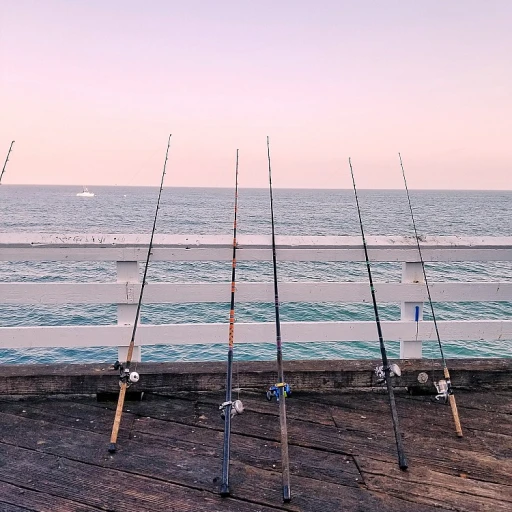
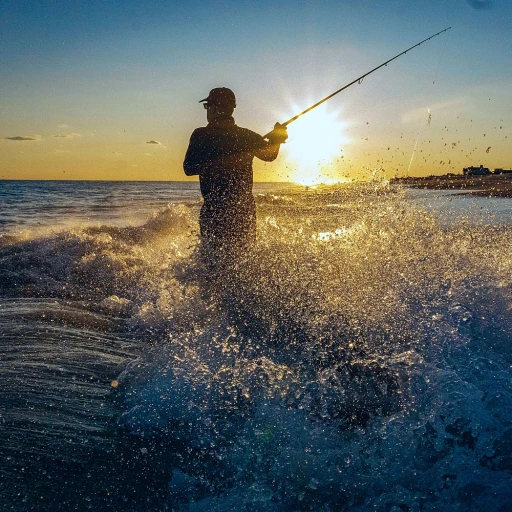


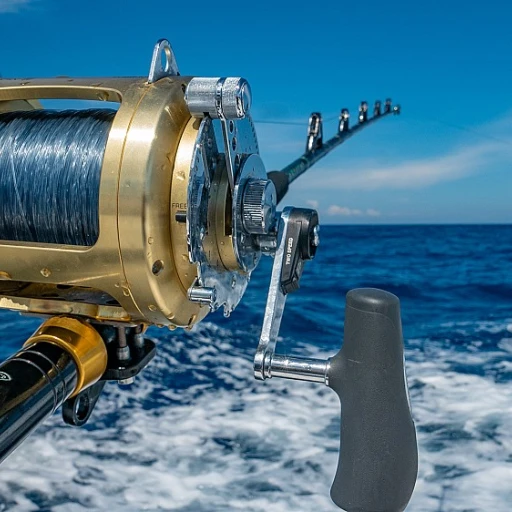
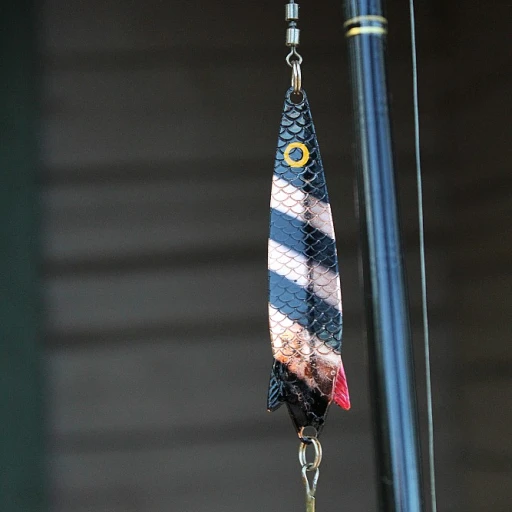

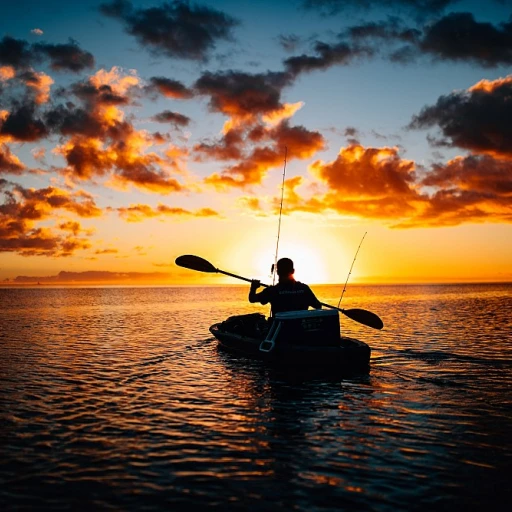
-large-teaser.webp)
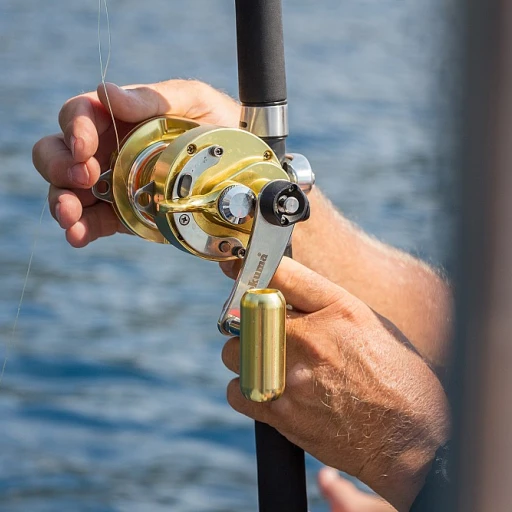

-large-teaser.webp)